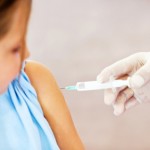Most of us who are adults (and many who are not) have personal knowledge of human sexual reproduction, the process by which a man and a woman each contribute genetic material that contains DNA (deoxyribonucleic acid), the chemical basis of new life. DNA is an incredibly long twisted molecule. Its structure is a double helix with two strands composed of a sugar-phosphate backbone linked by four specific chemicals: adenine (A), thymine (T), cytosine (C) and guanine (G). These are called bases and match up in specific pairs, A always with T and G with C.
DNA has an amazing ability to replicate itself; the strands separate and each becomes the pattern for a duplicate to be constructed. Occasional mistakes are made, but we have a cleanup chemical, DNA polymerase, a kind of automatic spellchecker, that makes corrections.
Our human DNA has about 3 billion pairs of these bases; yours and mine and Cousin Flo's will be 99% identical. The remaining 1% is what makes the difference between an Einstein, a sports hero, a jazz musician and you and me. Our DNA is 98% the same as a chimpanzees and 85% the same as a mouse, but these comparisons clearly understate the importance a single base pair difference can make.
Viral "reproduction" is quite different. Influenza viruses don't have DNA; instead they contain RNA and have to replicate in living cells. Once they are inside one, the process results in many viral "offspring." These eventually leave to infect other cells in the organism and in doing so kill the one they replicated in. RNA (ribonucleic acid) is somewhat like DNA, but has one different base and a slightly different sugar in its "backbone." It's usually found as single strands shorter than those of DNA or, in the case of the flu virus, in seven or eight pieces. It lacks a proofreading enzyme so most of the new influenza virus copies are actually mutants.
Most of these changes, called antigenic drift, are minor. So the flu shot I get every year, which is an educated best guess as to what this years flu virus will be, offers considerable, but not total protection.
Sometimes the mutations are more significant; the process is called antigenic shift. That may occur when a host is infected with two different influenza viruses at the same time. The swine flu, for example, contained genes from pigs, humans and birds. When this happens, pandemics may occur.
Influenza is spread in several different ways: an infected person coughs or sneezes and you inhale the aerosolized virus; humans may come into direct contact with bird droppings or nasal secretions; various surfaces may become contaminated (viral particles in mucous may survive several weeks on banknotes).
Modern techniques for producing new flu vaccines rapidly may prevent millions of deaths and steps toward a "universal flu vaccine" are being researched. In the meantime logical precautions and yearly flu shots can save lives.



